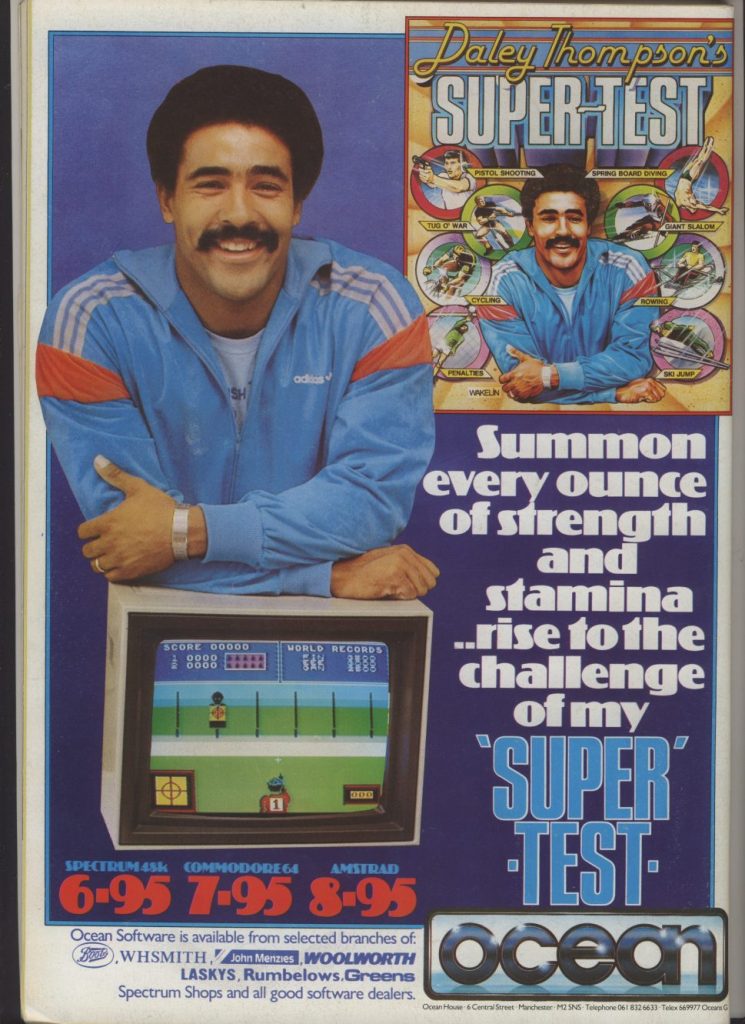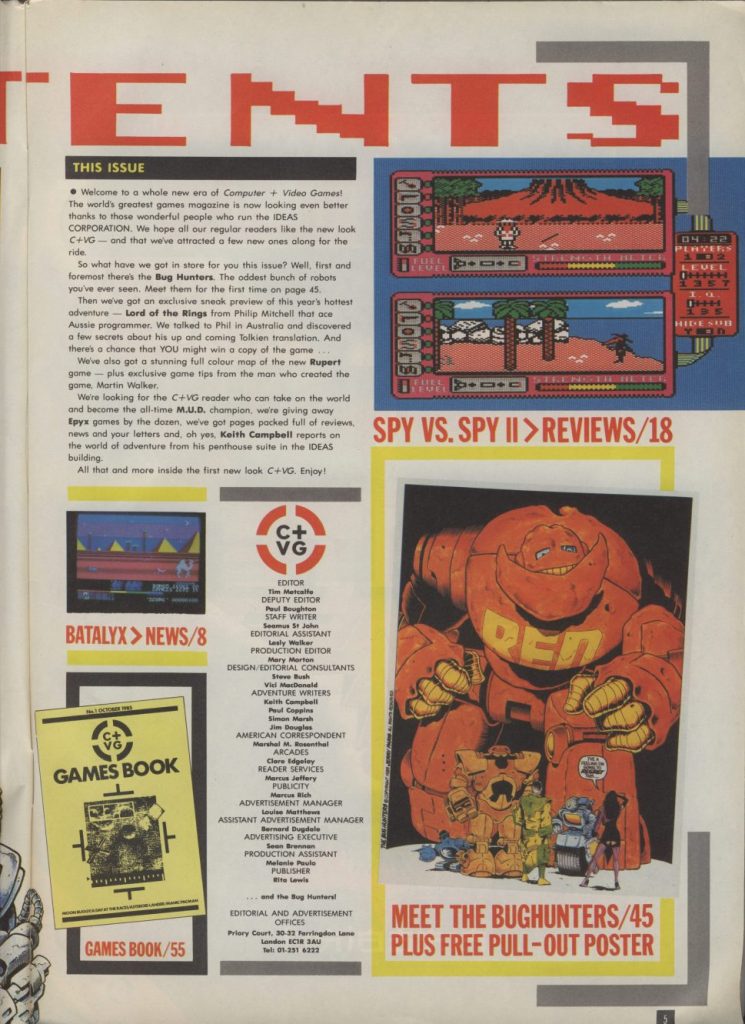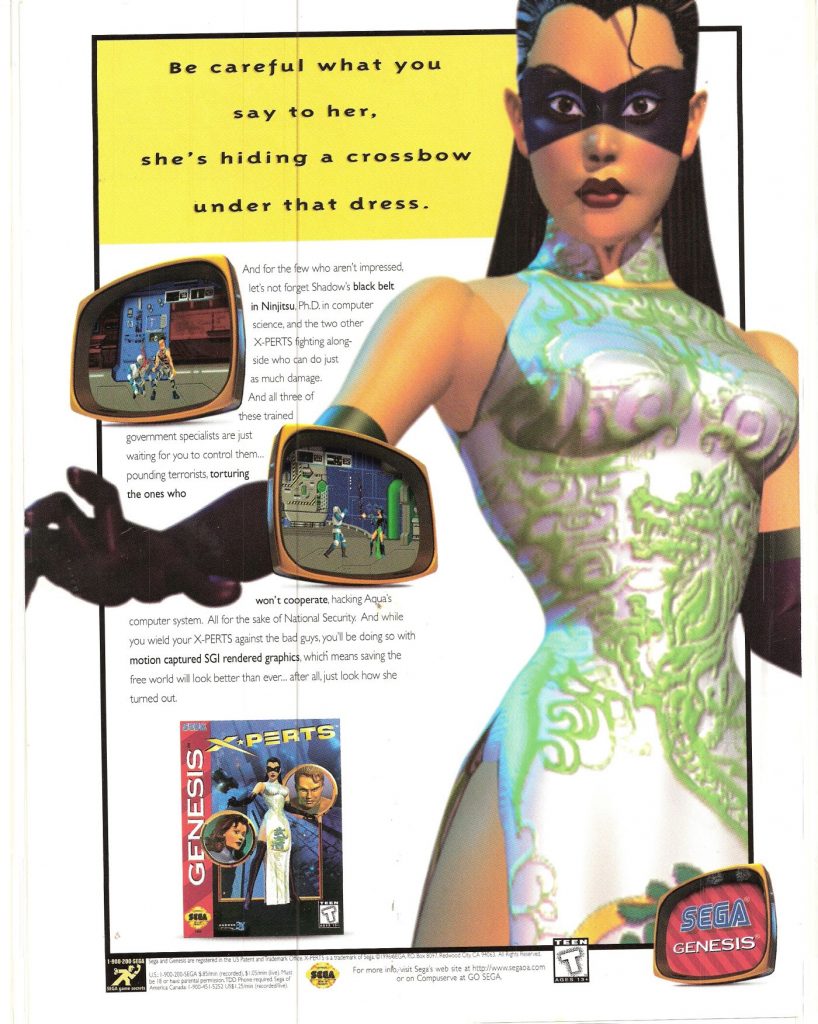Source: Computer + Video Games – Issue Number 48 – October 1985
Computer + Video Games was perhaps the longest running video game magazine not just in the U.K. where it was published, but in the world. Like the name suggests, it covered both video games and computer games of whatever systems were popular at the time. The October 1985 issue includes:
Features
- The Great Mud Challenge – A competition involving a Multi-User Dungeon (M.U.D.)
- Shatter – Titled after the main character, this comic book was the first created with a computer. Fittingly, it seems to have a cyberpunk theme.
- The Lord of the Rings – A preview of Lord of the Rings, a series of computer games based on the Tolkien novels.
- Dear Bughunters – Reader submitted bugs/bug fixes to type-in programs published in C+VG.
- Rupert and the Toymaker’s Party – A screen by screen map of Rupert and the Toymaker’s Party published by Quicksilva for the Commodore 64 and ZX Spectrum.
- The Bughunters – An ongoing comic book published within the pages of C+VG.
- Summer Games Challenge – A competition involving Summer Games II for the Commodore 64.
- Adventure Helpline – Help for various adventure games including The Tracer Sanction, Gruds in Space, Message from Andromeda, Eureka, Ground Zero, Pub Quest, Twin Kingdom Valley, Tir Na Nog, Pharoah’s Tomb, and more.
- C+VG Software Charts – Coming in at the top of the overall list this month is Hypersports by Imagine for the Commodore 64 and Spectrum. Games in the top 30 that I have played before include Spy Hunter, Spy Vs. Spy, Pitstop 2, Beach Head, Pole Position, and Kik Start (a hugely underrated game that few people have probably heard of). There are also machine specific lists for the Commodore 64, Spectrum, and Amstrad.
- Ideas Central – Game hints and cheats submitted by readers for Entombed, Dun Darach, Airwolf, Suicide Express, Bounty Bob Strikes Back, Frank Bruno’s Boxing, Way of the Exploding Fits, and Pitstop II.
- Hall of Fame – Reader submitted high scores for Bruce Lee, Spy Hunter, Hyper Sports, and more.
- Mailbag – Letters from readers about special effects in Tron and The Last Starfighter, game availability for the Amstrad, competition entry forms, and more.
- PSI Warrior – Another comic book published in the pages of CVG.
- Diary of a Game – The final part in a month by month look at how Space Doubt for the Commodore 64 was developed.
News + Reviews
- News – Wizard for the Commodore 64 released, A View to A Kill based on the James Bond movies of the same name now available for the Amstrad, plus news of other new releases such as The Devil’s Crown, Bored of the Rings, White Knight Mk12, and more.
- Reviews – Reviews of Frankie Goes to Hollywood (Commodore 64), Spy Vs. Spy (Commodore 64), Tour de France (Commodore 64), Road Race (Commodore 64), Boffin (BBC), Talos (Spectrum), Red Arrows (Spectrum/Commodore 64), Aabatron (BBC/Electron), Hyperdrive (Sinclair QL), Mad Doctor (Commodore 64), Hijack (Atari 400/800), Bio-Defense (Atari 400/800), Jump Jet (Amstrad), Dambusters (Spectrum), Robin Hood (Dragon 32), April Showers (BBC), One Last Game (BBC/Electron), Codename Mat II (Spectrum/Amstrad/Commodore 64), Racing Destruction Set (Commodore 64) – Rock ‘N Roll Racing was a much later sequel to this game, Southern Belle (Spectrum), Journey (Commodore 64), Profanation (Spectrum), Kennedy Approach (Commodore 64), and Matabolis (Spectrum/Amstrad/Commodore 64).
- Arcade Action – A look at some of the latest arcade games including Top Gear, Nemesis, My Hero!, and City Connection.
- Adventure Reviews – Reviews of Enthar Seven (BBC B), Super Gran (Spectrum/Commodore 64/Amstrad), Terrormolinos! (Spectrum – more of a preview really), Mordon’s Quest (Spectrum/Amstrad/Commodore 64), Castle Dracula, Red Moon, and more.
Games Book
- Moon Buggy (Spectrum) – A type-in game that is a clone of the arcade game of the same name.
- Manic Pacman (Commodore 64) – A type-in version of Pacman for the C64.
- Asteroid Lander (Amstrad) – A type-in game that is reminiscent of Defender or Choplifter.
- Day at the Races (Atari) – A type-in horse racing game that can be played by up to four player.

…and more!










